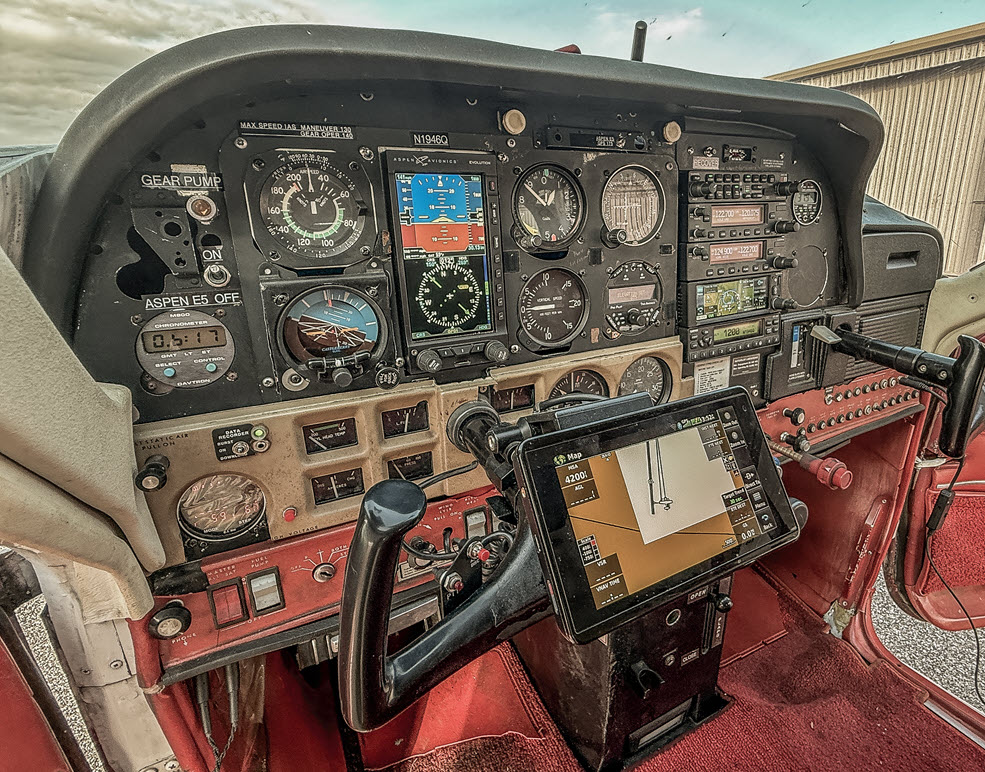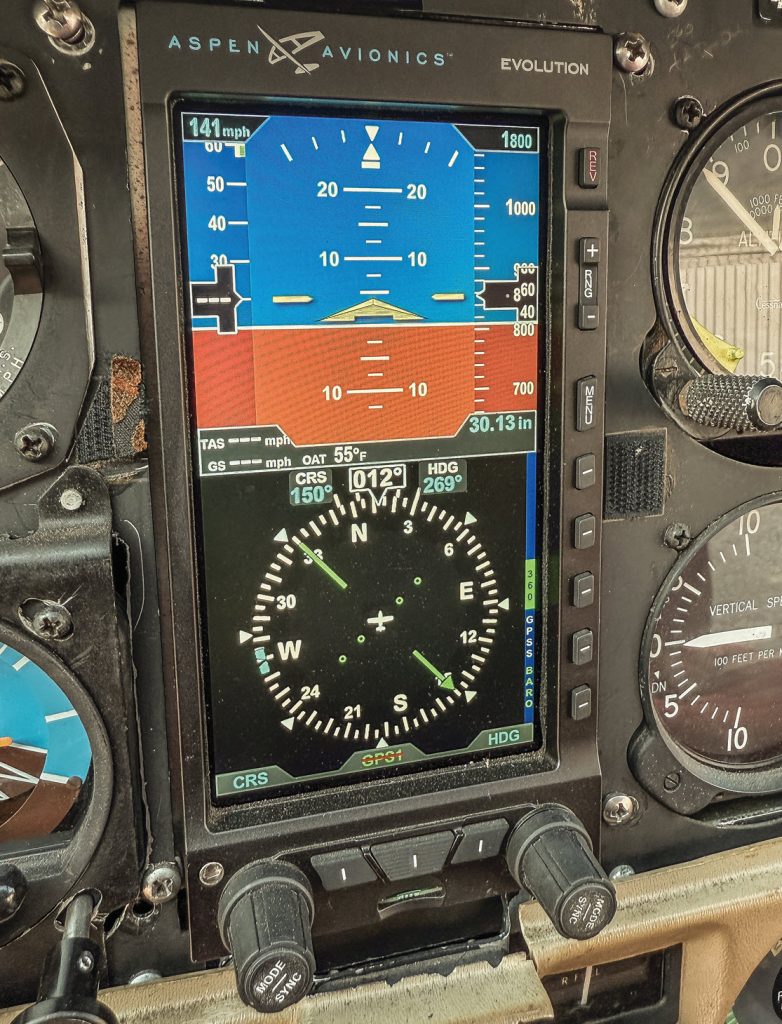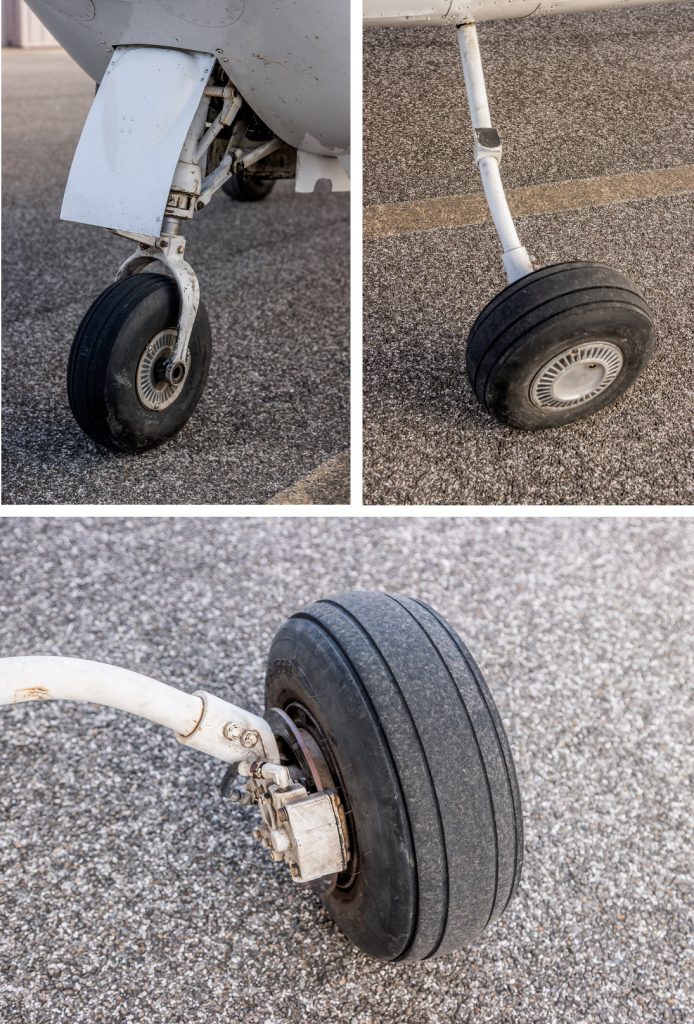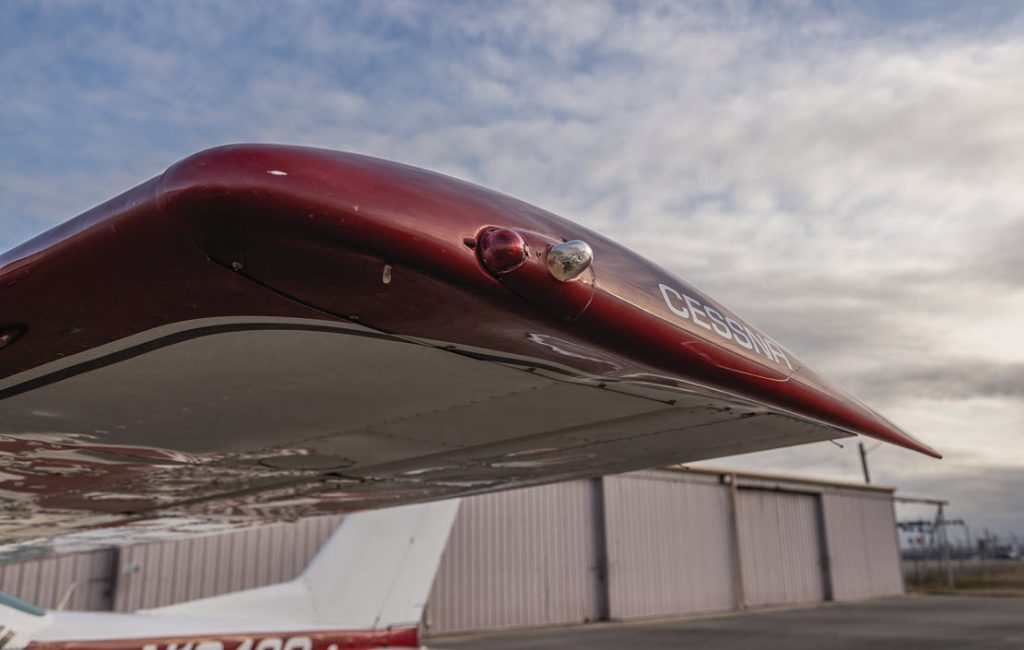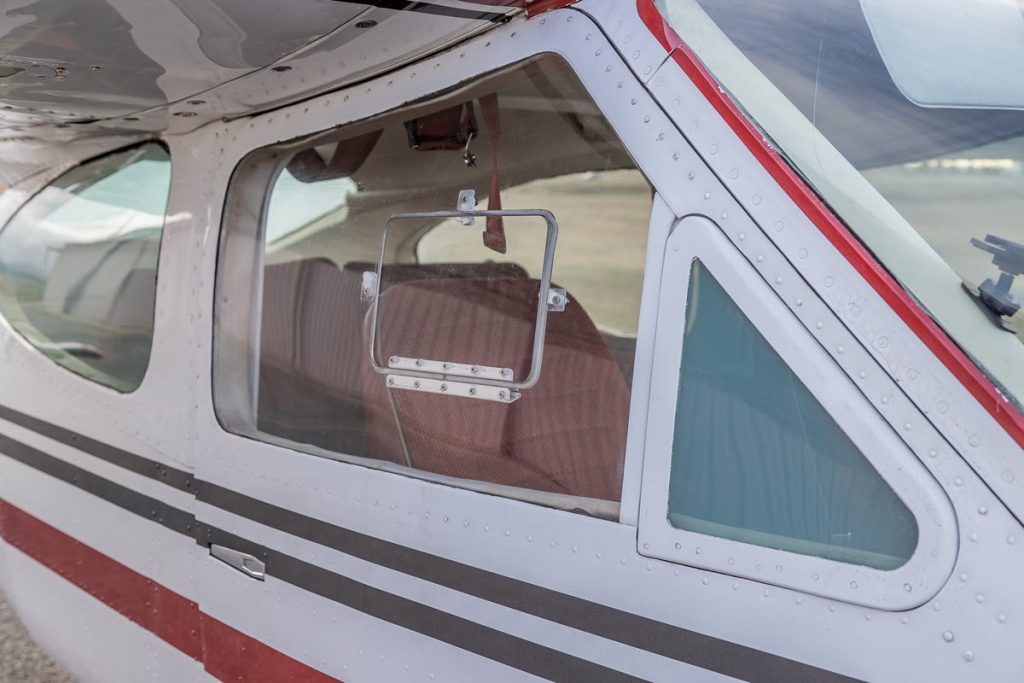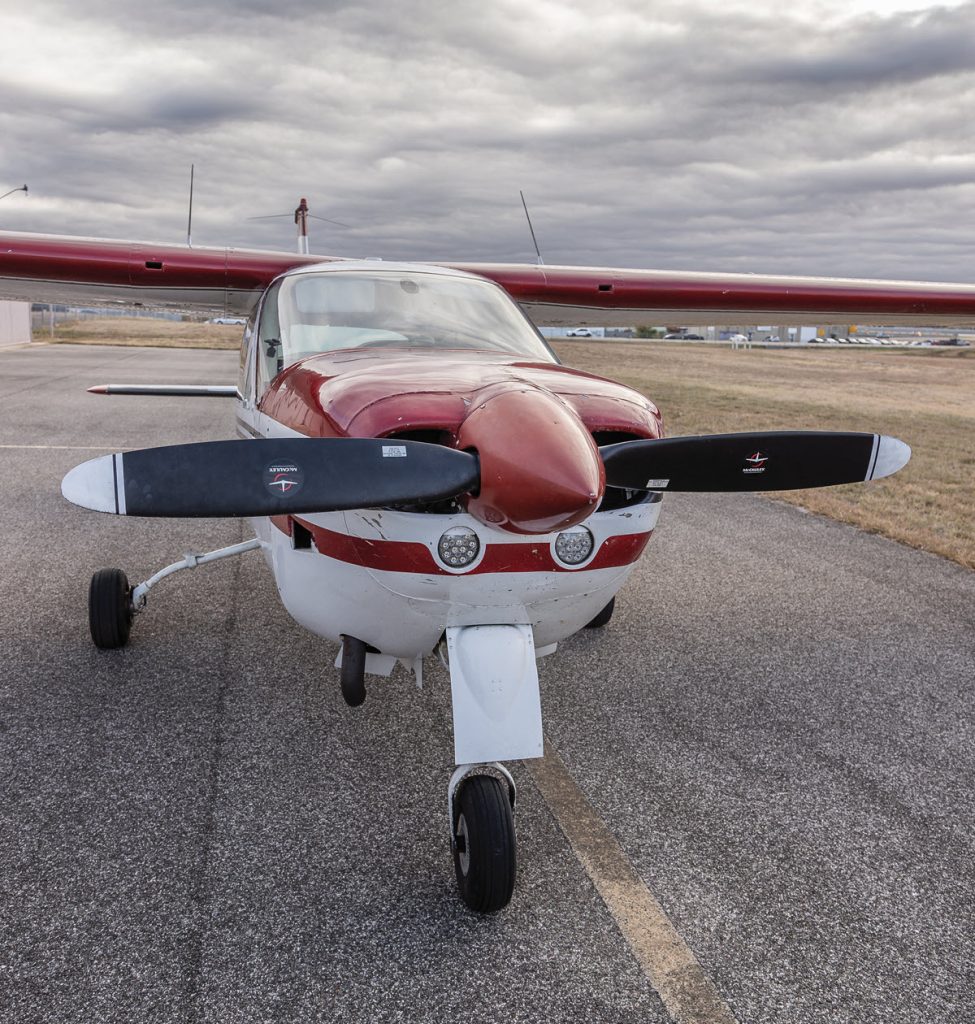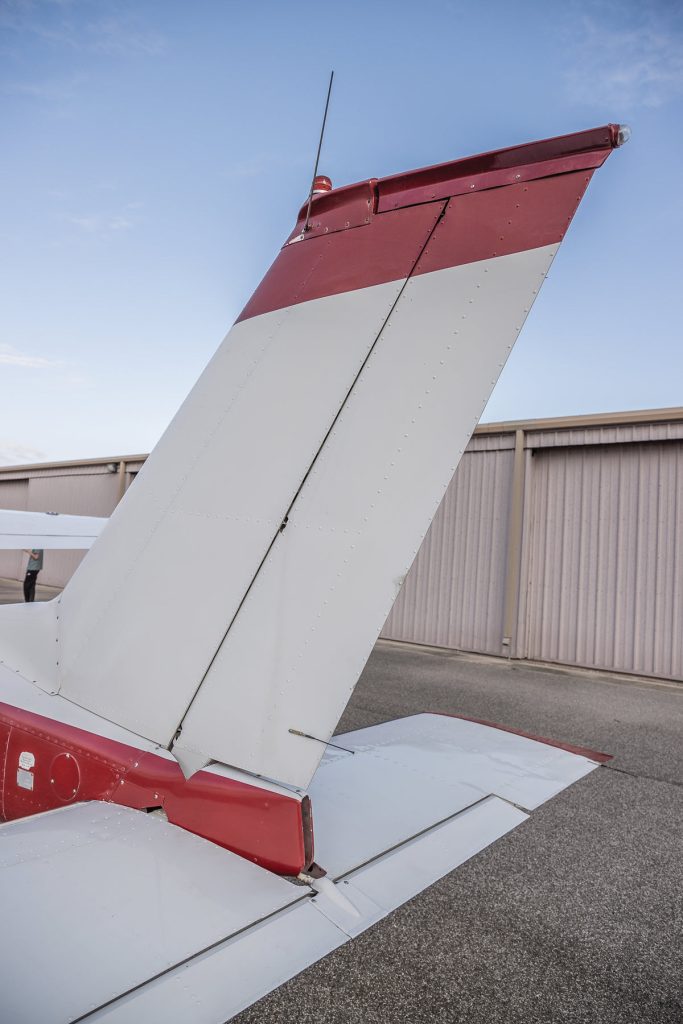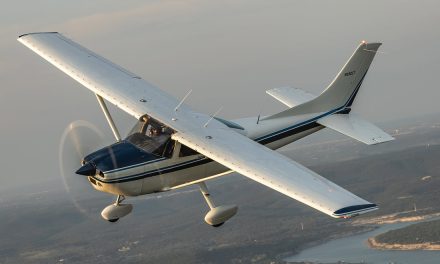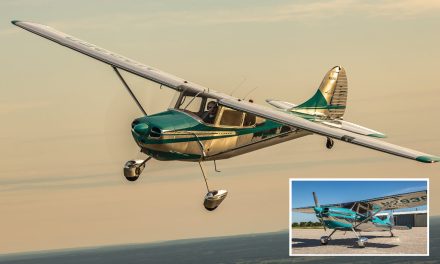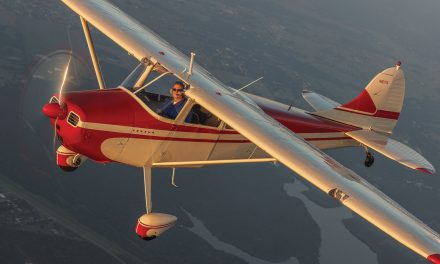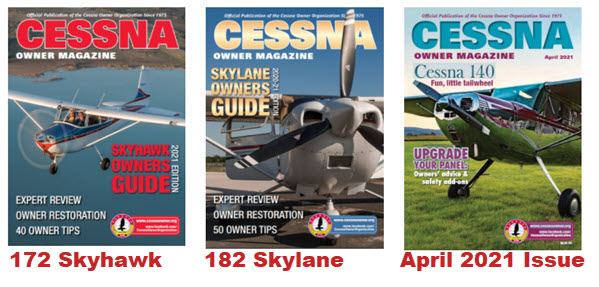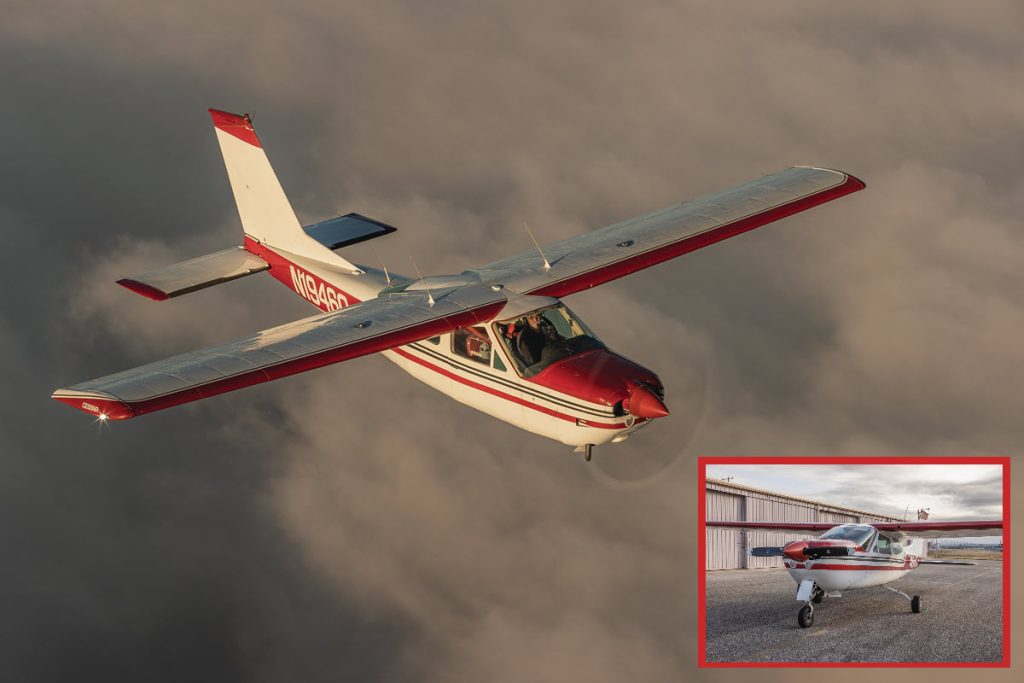
By Michelle Adserias
Garrie Moore had his sights set on a Mooney since he was young. In the 1970s, he and his father drove to Kerrville, Texas to tour the factory after reading about the new M20J/Mooney 201 in an article. So it’s not surprising he started looking for one after he retired in 2013. Garrie already owned a 1968 fixed-gear Cessna 177 (you can read more about that in the March 2024 issue of Cessna Owner Magazine), but he was looking for something faster for cross-country flights.
His golden opportunity came in 2016 when he found a nice M20E model, with speed modifications, on the market. The engine was fresh, the airframe was clean and solid; only the panel was old and would need updating. He and his wife, Marian, decided to take it on a test flight.
Garrie knew they were off to a rocky start when he saw the frown on Marian’s face as she climbed onto the low wing to settle into the cozy cockpit. “She had become accustomed to me opening the wide doors of my 68FG for her, as I have always done for her in the cars we drive.” Garrie tried to sell her on this aircraft by telling her how much faster the Mooney was than their Cessna. She wasn’t sold. She looked at the back seat and asked, “Where are the grandchildren going to sit?”
Since it was clear Marian valued comfort over speed, Garrie began looking into other options. About a year later, N1946Q, a 1973 Cessna 177RG became available. It offered him most of the additional speed he wanted with the comfort Marian sought. “So, it was a win-win.”
Why Two Planes?
Garrie’s two Cessnas have two very different missions. The 1968 fixed gear (FG) is slower and ideally suited for local jaunts and sightseeing flights over the lake country. The speed of his 1973 retractable gear (RG) makes it a better choice for longer flights and cross-country trips. One of his favorite ventures is participating in the Cessnas 2 Oshkosh mass arrival flight to AirVenture each year.
He likes the snappier feel of his ’68 Cessna. Garrie has taken the back seats out to lighten it up so it’s quick and wieldy off the runway. The weightier ’73 Cessna, however, handles the summer bumps better, which makes for a smoother flight.
Owning both airplanes is part of a long-range plan. As he gets older, Garrie understands the insurance rates for N1946Q will likely increase. When the price exceeds what he’s willing to pay, he plans to sell his retractable gear Cessna and will still have his “trusty old 68FG.” In the meantime, he’s enjoying the speed as much as possible.
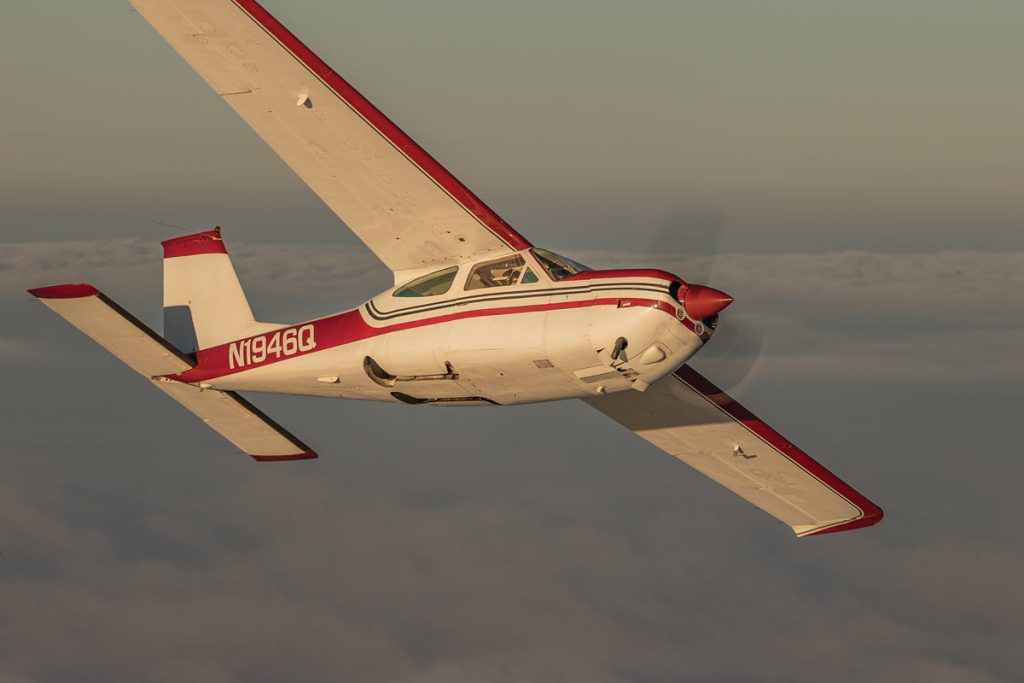
Landing the Retractable Gear Cardinal
These two Cardinals don’t just have different missions. They also handle quite differently, which Garrie discovered when he was doing his transition training with his longtime instructor, George Wilhite. Landings were particularly challenging. Garrie would use the same approach he’d mastered in his fixed gear Cessna but the 68FG is more sensitive to pitch, causing Garrie to under-control the 73RG which is less pitch sensitive. The result was a sloppy landing. He remembers commenting, on more than one occasion, “This isn’t like flying the FG.”
George would simply reply, “Well, this isn’t your FG. It’s your RG. Now, let’s go around and try that again.”
According to the Aviation Safety Reporting System, there are about 60 gear-up landings each year. Some of these are the result of mechanical errors and malfunctions. I asked Garrie how he makes sure the gear is down before he lands. He had these practical tips to share with our members.
He credits his instructor for pounding in some important practices while he was training. First, while setting up for the pattern entry, Garrie starts his GUMPS (Gas, Undercarriage, Mixture, Propeller/Pump, Switches/Seat Belts) check. Then, when he lowers his gear, he doesn’t take his hand off the gear lever until he sees the green “down” light. By the time he enters the landing pattern, his gear should be down and on the downwind, he checks his GUMPS list one last time. Finally, he does a visual check for confirmation. He looks at his left tire and says out loud, “I see rubber.” He repeats this practice on the downwind, on base, and on the final approach.
This habit spared him a gear-up landing when his alternator quit and the battery didn’t have enough juice left to lower and lock the landing gear. It was later discovered the bracket holding the alternator had cracked and the alternator had shifted, which loosened the belt. “On that occasion, the ‘do not take your hand off the gear lever until green light’ worked for me.” Garrie wasn’t in the pattern yet, so he was able to navigate away from the airport traffic, troubleshoot the problem, and pump the gear down manually.
He has since installed a mirror so he can also see his nose gear. If you’re in the cockpit with him, you’ll now hear him say, “I see rubber. I see nose gear.”
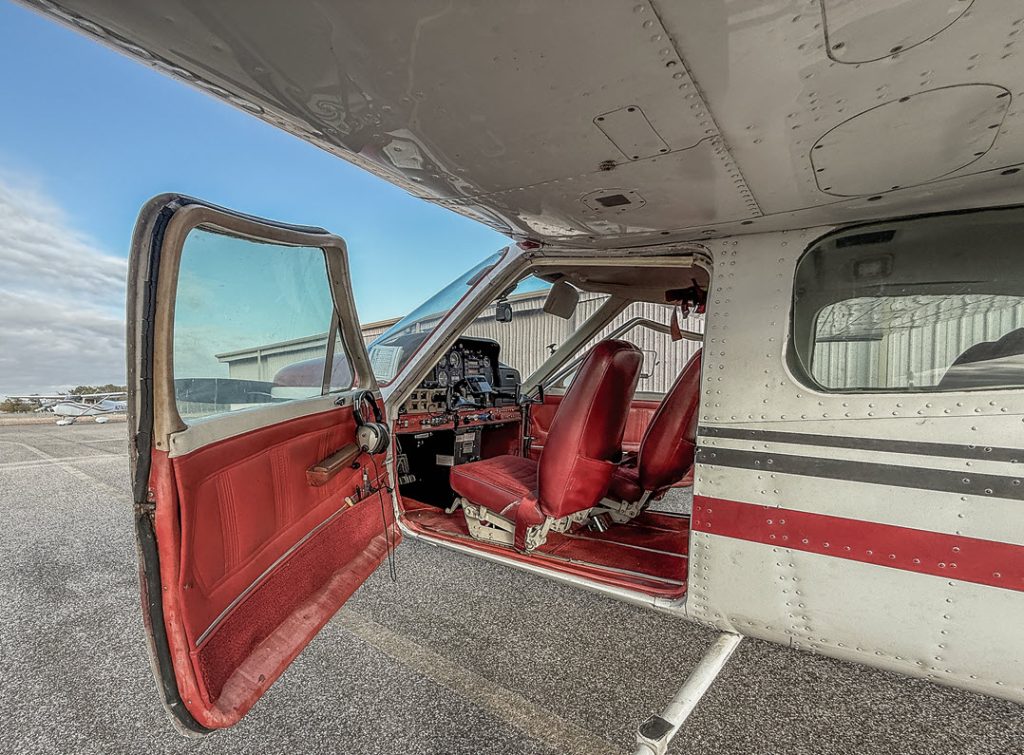
N1946Q’s Story
The logbooks for N1946Q went back to the time it rolled off the factory floor. The early entries from 1973 were flights logged in and out of ICT with “Demo” or “Transportation” given as the reason for the flight. It seems Garrie’s newest acquisition once served as a Cessna company airplane. Beyond that, this Cardinal has led a quiet life, serving its subsequent owners well and without incident.
When Garrie purchased N1946Q, it had been sitting at the back of a hangar for about a year. Prior to that, it was outside on a ramp. Despite this, the paint was still good, under the layer of grime, and the interior was also in good condition.
Although the airframe was solid, the engine had high hours on it. Garrie had a factory remanufactured IO-360-A1B6 installed, which eliminated the Bendix dual mag. Then he had the propeller overhauled and installed a new prop governor, new hoses and a new oil cooler. At his most recent annual, Garrie added a SureFly electronic MAG.
When Garrie purchased his Cardinal, it had a dated LORAN panel and Narco MK-12 radios. An upgrade was necessary for safety reasons. He installed an Aspen E5, Garmin GPS175, GNC255, GTR225 and a GMA345 audio panel.

“The AspenE5/Trio AutoPilot and GPS175 work so well together, I believe the FAA will need to issue an AD to require the installation of a cold-water spraying device that will squirt the pilot in the face every few minutes to keep him awake!”
Future plans are to install a Power Flow exhaust, which Garrie already has on his 1968 Cessna 177, to improve the plane’s performance.
Generally, Airworthiness Directives (AD) and Service Bulletins haven’t been a concern but when the carry thru spar AD for both of his airplanes came out, Garrie had a few sleepless nights. In the end, his concerns were unwarranted. Both aircraft passed with flying colors. So far, he has not run into any problems getting parts either. He’s been able to find everything he needed through vendors and relies most often on Aircraft Spruce for his needs.
Taking to the Skies
Garrie has been enjoying aviation since he received his PPC in 1990 and his Cardinals have added to his experience.
“The visibility out of a Cardinal is second to none. They are very comfortable for the passengers and pilots to get in and out of.” Garrie flies about 100-120 hours each year and budgets for 10 gph at 160 mph.
Through the years, Garrie has made many wonderful memories flying with his family. But the one that tops them all is the photo shoot he and his grandson, Brody, did together for Cessna Owners Magazine last year. He looks forward to spending many more memorable moments with his family in the cockpit.
Have a website login already? Log in and start reading now.
Never created a website login before? Find your Customer Number (it’s on your mailing label) and register here.
JOIN HERE
Still have questions? Contact us here.

